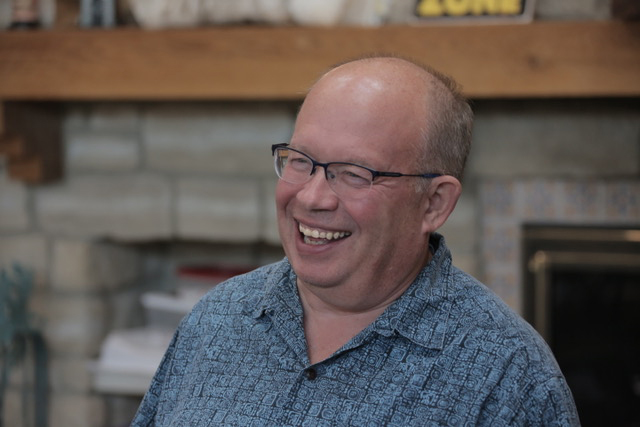Driving Eureka! Complete Audiobook
Transform the art of innovation into a reliable system!
Fill out the form below to access the complete audiobook for FREE.

Transform the art of innovation into a reliable system!
System Driven Innovation enables you and everyone on your team to use innovation to work smarter, faster, and more creatively. It transforms innovation from a random act to a reliable science. This new mindset ignites confidence in the future. It enables the creation of bigger and bolder ideas―and turns them into reality faster, smarter, and more successfully. With this new mindset, innovation by everyone, everywhere, every day becomes the norm. The rapidly changing world becomes a tremendous opportunity to achieve greatness.
Innovation Engineering defines innovation in two words: Meaningfully Unique. When a product, service, or job candidate is Meaningfully Unique customers are willing to pay more money for it. This links to the two simple truths in today’s marketplace:
If you’re Meaningfully Unique life is great! If you’re NOT Meaningfully Unique you’d better be cheap.
Innovation Engineering is a new field of academic study and leadership science. It teaches how to apply the science of system thinking to strategy, innovation, and cooperation. Research finds that it helps to increase innovation speed (up to 6x) and decrease risk (by 30 to 80%). Innovation Engineering accelerates the creation and development of more profitable products and services. However, the bigger benefit may well lie in its ability to transform organizational cultures by enabling everyone to work smarter every day.
What makes Innovation Engineering unique is that it’s grounded in data, backed by academic theory, and validated in real-world practice. Collectively, it’s the number one documented innovation system on earth. Over 35,000 people have been educated in Innovation Engineering classes, and more than $15 billion in innovations are in active development.
In his book Driving Eureka!, best-selling business author Doug Hall presents the System Driven Innovation scientific method for enabling innovation by everyone, everywhere, every day. It’s the essential resource you need to enable yourself―and your team―to innovate, succeed, and do amazing things that matter, on a daily basis.

About Doug Hall
Doug is a business inventor, author, entrepreneur & bourbon maker. Doug is a chemical engineer (University of Maine) by education who worked in the Brand Management department at Procter 6 Gamble rising to the rank of Master Marketing Inventor. After 10 years at P&G he retired to create the Eureka! Ranch – a company on applying system thinking to innovation. The goal is to discover reproducible and reliable methods for enabling everyone to be able to think bigger, bolder, and more innovatively. A few years ago Doug’s curiosity on whiskey lead to the creation of Brain Brew Custom WHISKeY – focused on returning bourbon to its roots as a product of the people. In recognition of his quantitative research discoveries on innovation systems I’ve been awarded honorary doctorates degrees by the University of Prince Edward Island and by the University of Maine.
Introduction
Chapters
Chapter 1: PROBLEM: Innovation Is No Longer Optional
Those organizations that are leading change in their industries are winning. Those that are “reacting” to the forces of change are losing.
Chapter 2: SOLUTION: Innovation Engineering Pedigree
Definition of a System: The Innovation Engineering movement defines a system as Dr. Deming did: two or more independent parts with a common aim.
Chapter 3: Innovation Agreement
A Major Mistake: As we embarked on bringing system thinking to the world of innovation, we made a major mistake. We assumed everyone understood what innovation was and why it was important.
Chapter 4: innovation System
94% Is the System, 6% is the Worker: It is very frustrating to be the leader of a department, division, or company and not be optimistic or confident in the organization’s ability to innovate.
Chapter 5: Learning Mindset: The 3 Innovation Principles
Innovation requires a learning mindset. You can’t create a new idea without learning. When learning is a priority, you have hope, along with faith in the future.
Chapter 6: Learning Mindset: Create System
Create, Problem Solve, Re-create: The Innovation Engineering course titled CREATE should be called CREATE, PROBLEM SOLVE, and RE-CREATE.
Chapter 7: Learning Mindset: Communicate System
Communicate is the Secret to Being Great at Create and Commercialize: Create and Commercialize generate the most excitement when students learn about Innovation Engineering courses.
Chapter 8: Learning Mindset: Commercialize System
This interview with Steve Jobs, the legendary co-founder of Apple, aligns with my 40 years of experience with innovation. 90% of the magic behind WOW products, services, or operational systems is the system used to move from idea to reality.
Chapter 9: Alignment Subsystem
Enabling Organizational Alignment: Alignment means there is agreement first among the leadership and second between the leadership and the organization, from middle management to frontline employees.
Chapter 10: Collaboration Subsystem
Collaboration Leverages the Exponential Power of Diversity: Given a choice between hiring a creative guru or developing a network of internal collaborators, it’s a no-brainer – the internal network is far more effective.
Chapter 11: Merwyn Rapid Research Subsystem
Before We Begin – An Explanation: I must admit that, as the founder of the Innovation Engineering movement, I have used my position to name the research subsystem after my father Merwyn Bradford Hall.
Chapter 12: Patent ROI Subsystem
What is a Patent? Ideas that are patentable are Meaningfully Unique innovations. Conversely, when an idea isn’t patentable, then by the strictest definition it is not a Meaningfully Unique innovation.
Chapter 13: How to Create an Innovation Culture
Four-Step Quick Start: Whenever we teach Innovation Engineering, it is not long before someone says, “OK, I get it. How do I create an innovation culture in my ___ (team, division, company, community)?.
